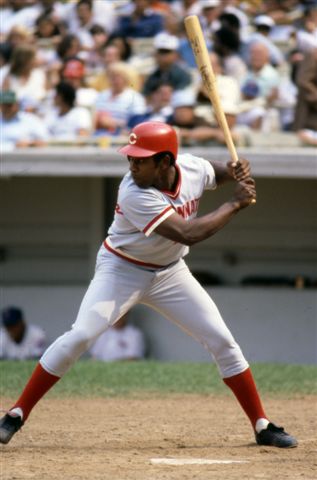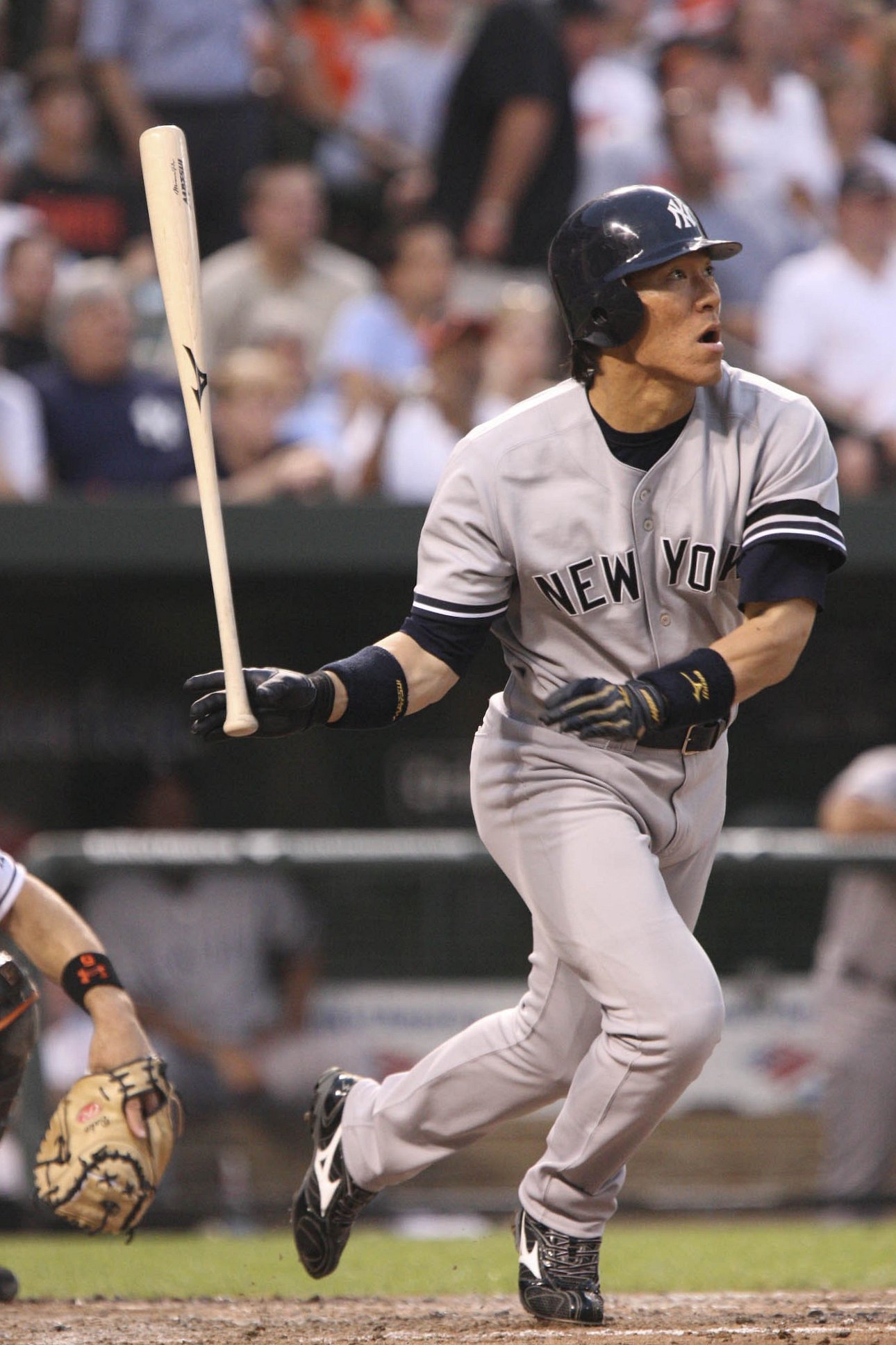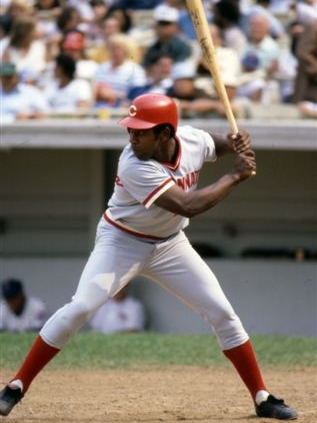The DH in the World Series: Interesting Facts
This article was written by John Cronin
This article was published in Fall 2011 Baseball Research Journal
Here are some interesting facts about usage of the designated hitter during World Series play:
 In 1976, when the DH was used for the first time in the World Series, DHs for the Yankees hit .063 (1-for-16) while the Cincinnati Reds’ DHs hit .357 (5-for-14). The Yankees used three players in the DH role, while the Reds used only one: Dan Driessen. The Reds swept all four games.
In 1976, when the DH was used for the first time in the World Series, DHs for the Yankees hit .063 (1-for-16) while the Cincinnati Reds’ DHs hit .357 (5-for-14). The Yankees used three players in the DH role, while the Reds used only one: Dan Driessen. The Reds swept all four games.- During all World Series in the 1970s, the National League DHs outhit the American League DHs .281 (9-for-32) to .256 (10-for-39).
- Average runs scored per World Series game in the 1970s were 4.45 when the DH was used, only 3.73 when not.
- In 1982, the NL St. Louis Cardinals’ DHs outhit the AL Milwaukee Brewers’ DHs .429 (12-for-28) to .125 (3-for-24). The Cards beat the Brewers in 7 games.
- In 1984 the NL San Diego Padres’ DHs hit .412 (7-for-17, including 2 home runs). The AL Detroit Tigers’ DHs hit .059 (1-for-17). However, the Tigers won the Series, 4–1.
- In the 1981 World Series, the pitchers on both teams (Los Angeles Dodgers and New York Yankees) went a combined 0-for-26.
- In the 1983 World Series, the pitchers on both teams (Baltimore Orioles and Philadelphia Phillies) went a combined 1-for-23.
- Pitchers “hit” the height of futility in the 1985 World Series when all the pitchers batted .000, going a combined 0-for-30 in the all-Missouri World Series (Kansas City Royals versus the St. Louis Cardinals).
- During the 1980s, the National League DHs outhit the American League DHs .303 to .216. During that time, American League pitchers had 1 hit in 69 at-bats for an average of .014. The average number of runs per game was 4.25 when the DH was utilized and 3.84 when the pitchers hit.
- During the 1988 World Series, the Los Angeles Dodgers’ pitchers were perfect hitting 1.000 (3-for-3) while the AL Oakland A’s’ pitchers were the opposite, hitting .000 (0-for-4). The Dodgers won the Series, 4–1.
 During the 1990s, the average number of runs per game was 4.70 when the DH was utilized and 4.04 when the pitchers hit.
During the 1990s, the average number of runs per game was 4.70 when the DH was utilized and 4.04 when the pitchers hit.- In 1997 the NL Florida Marlins were in their first Fall Classic in their brief history. Their DHs hit .500 (6-for-12) while the Cleveland Indians’ DHs hit .182 (2-for-11). The Marlins won the Series, 4–3.
- In 2003, the Marlins returned to the World Series against the Yankees. New York’s DHs hit .125 (1-for-8) while Florida’s hit .111 (1-for-9). The Marlins won the Series, 4–2.
- In 2005, DHs for the AL Chicago White Sox hit .429 (3-for-7) while the DHs for the Houston Astros hit .167 (1-for-6). The White Sox swept the Series.
- It is natural to assume that when the DH is utilized, starting pitchers will go further in the game than when they hit. However, this was not the case during the 1980s, when starters averaged only 5.65 innings per start in DH games, but 5.84 innings when they had to hit.
- There have been only three World Series where both teams used the same player as DH throughout the series:
1989: Oakland Athletics, Ernest Riles; San Francisco Giants, Dave Parker
1992: Toronto Blue Jays, Dave Winfield; Atlanta Braves, Lonnie Smith
2005: Chicago White Sox, Carl Everett; Houston Astros, Jeff Bagwell - The Detroit Tigers used the most DHs in a single World Series game when they used 4 in Game Five of the 1984 World Series.
- The most impact a DH had on a World Series game came in the Game Six of the 2009 World Series played between the New York Yankees and the Philadelphia Phillies. The Yankees DH, Hideki Matsui, contributed to six of the seven runs his team had in the game. Matsui batted .600, the highest average for a DH in a World Series, and was also the first DH to win the World Series Most Valuable Player Award.
JOHN CRONIN has been a SABR member since 1985 and currently serves on the Minor League Committee. Cronin is a lifelong Yankees fan and his area of special interest is Yankees minor league farm teams over the years. He is a C.P.A. and a retired bank executive, who has a B.A. in History from Wagner College and an M.B.A. in Accounting from St. John’s University.
Sources
- Baseball-Reference.com
- Enders, Eric. 100 Years of the World Series, Barnes & Noble Publishing, Inc., 2003.
- Okkonen, Marc. The Federal League of 1914-1915 Baseball’s Third Major League, The Society for American Baseball Research, 1989.
- Vescey, George. Baseball: A History of America’s Favorite Game, New York: Random House, 2006.
- www.Baseball-Almanac.com


